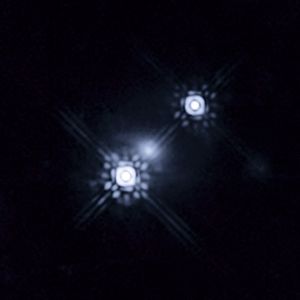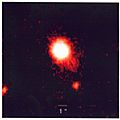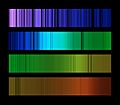Quasar facts for kids
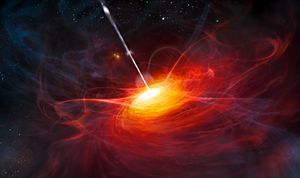
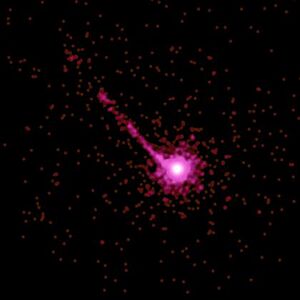
Quasars are super bright objects found in the very early universe. Their name, "quasi-stellar radio sources," means they look a bit like stars but are actually much more powerful. They are the most energetic and distant types of active galaxies.
Even though they are incredibly bright, quasars are quite small. They are not much bigger than our own Solar System. The amazing energy they give off comes from a huge supermassive black hole at their center.
Contents
What is a Quasar?
Scientists believe that a quasar is a very dense area at the heart of a huge galaxy. This area surrounds a central supermassive black hole. The size of this active region can be 10 to 10,000 times the size of the black hole's event horizon (the point of no return).
How Do Quasars Produce So Much Energy?
The incredible energy from a quasar comes from gravitational energy. This energy is made when a lot of gas and dust falls onto a spinning disk around the black hole. This disk is called an accretion disc. As matter spirals into the black hole, it heats up to extreme temperatures and glows brightly.
The accretion disks around these black holes are very efficient. They can turn about 10% of the matter falling in into pure energy. This is much more efficient than the nuclear fusion that powers stars!
Why Were Quasars More Common in the Early Universe?
Quasars were much more common when the universe was young. This is because there was a lot more gas and dust available for the black holes to "eat."
Over time, as the black holes consumed all the nearby gas and dust, the energy production slowed down. This means that most galaxies, including our own Milky Way, probably had an active quasar phase in their past. Now, they are "sleeping" because there isn't enough matter left to feed their central black holes and create all that radiation.
Related Pages
Images for kids
-
This picture, taken with infrared light, shows a quasar and a very bright starburst galaxy working together.
See also
 In Spanish: Cuásar para niños
In Spanish: Cuásar para niños


